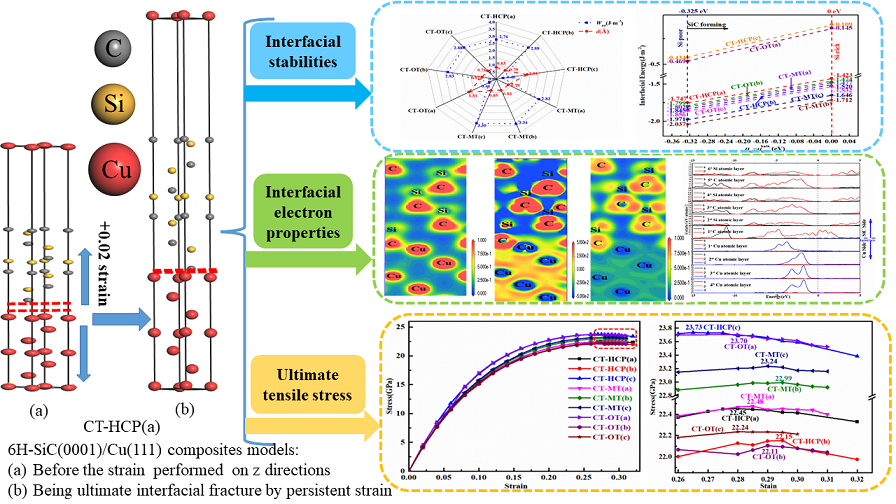The interfacial mechanics and electrical properties of the SiC reinforced copper matrix composites were studied via the first principles method. The work of adhesion (Wad) and the interfacial energies were calculated to evaluate the stabilities of the SiC/Cu interfacial models. The carbon terminated (CT)-SiC/Cu interfaces were predicted more stable than those of the silicon terminated (ST)-SiC/Cu from the results of the Wad and interfacial energies. The interfacial electron properties of SiC/Cu were studied via the charge density distribution, charge density difference, electron localized functions and partial density of the state. The covalent C-Cu bonds were formed based on the results of the electron properties, which further explained the fact that the interfaces of the CT-SiC/Cu are stable than those of the ST-SiC/Cu. The interfacial mechanics of the SiC/Cu were investigated via the interfacial fracture toughness and ultimate tensile stress, and the results indicate that both CT- and ST-SiC/Cu interfaces are hard to fracture. The ultimate tensile stress of the CT-SiC/Cu is nearly 23GPa, which is smaller than those of the ST-SiC/Cu of 25 GPa. The strains corresponding to their ultimate tensile stresses of the CT- and ST-SiC/Cu are about 0.28 and 0.26, respectively. The higher strains of CT-SiC/Cu indicate their stronger plastic properties on the interfaces of the composites.

